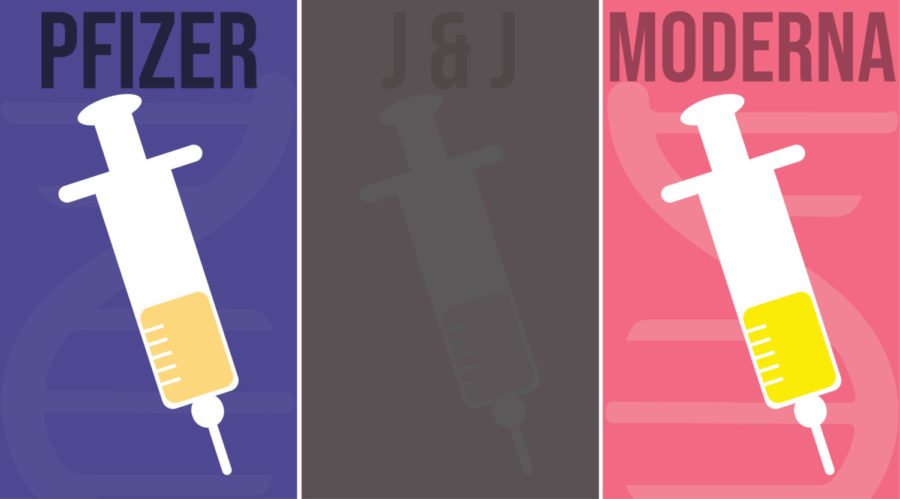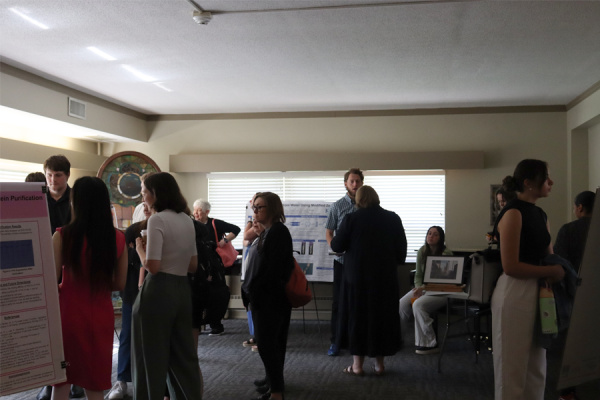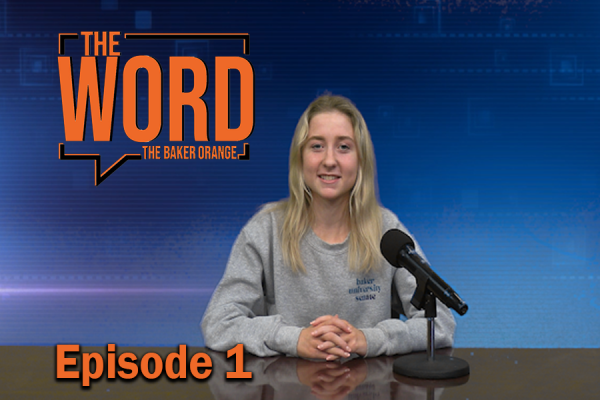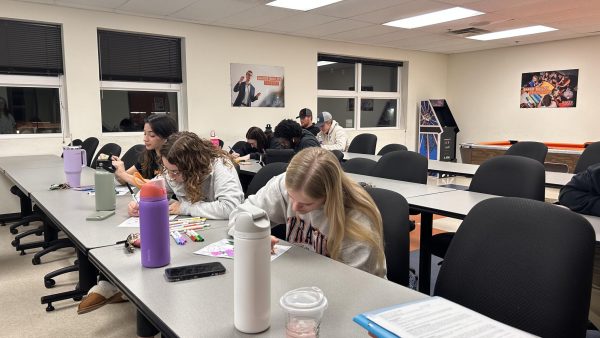What to know about the current COVID-19 vaccines
The three COVID-19 vaccination options, Moderna, Pfizer-BioNtech and Johnson and Johnson, offer varying options for the public to fight the virus.
As of Apr. 19, every person over the age of 16 is eligible to receive the COVID-19 vaccination in the United States. However, only 69 percent of all Americans are planning on receiving a vaccine.
With so much uncertainty, it is important to know the complexities behind available vaccinations as well as what to expect when being vaccinated.
Only three pharmaceutical companies’ vaccines have been approved for use by the Federal Drug Administration (FDA) within the United States: Moderna, Pfizer-BioNTech and the Johnson and Johnson vaccine.
Although there are different types of vaccinations available, experts agree that people should not wait for a specific vaccine and should be vaccinated as soon as possible.
All three vaccinations protect against COVID-19 and, although efficacy rates differ, many have said that the best vaccination is the one that is available to you first.
Moreover, it is currently unknown how effective the vaccines are against the variant forms of COVID-19. The Centers for Disease Control (CDC) states, “studies suggest that antibodies generated through vaccination with currently authorized vaccines recognize these variants.”
Moderna
Recommended for people 18 and over, the Moderna vaccine is given in a series of two shots up to 28 days apart.
The Moderna vaccine is a Messenger RNA (mRNA) vaccine. According to the CDC mRNA vaccines work by teaching cells in our bodies to make a protein that triggers an immune response.
The vaccine is administered in the upper arm where the mRNA, or instructions to make the protein, are received and the cells begin making the instructed protein. Once the protein is made, the human body breaks down the instructions.
The newly made protein is then moved to the surface of the cell where immune systems recognize it as not belonging. Then, the body begins making a natural immune response to the new protein and begins building antibodies.
This results in the body learning to protect against future infection, such as COVID-19.
Common side effects of the Moderna vaccine include pain and swelling near the injection site as well as chills, nausea, fever, headache and tiredness. Symptoms usually take a day or two after the vaccination to develop.
The Moderna vaccine is 94.1 percent effective at preventing COVID-19 after two doses.
Pfizer-BioNTech
The Pfizer-BioNTech vaccine, like the Moderna vaccine, is an mRNA vaccine. This means that it utilizes the same RNA process to stimulate an immune response from the body to the COVID-19 virus.
This vaccine is recommended for everyone 16 years of age and older and also comes in a series of two vaccinations up to 21 days apart. However, once one dose of either mRNA shot is given, the second does must come from the same vaccine.
This means that if a person received their first dose of the Pfizer-BioNTech vaccine, their second dose cannot be the Moderna vaccine, even though both vaccines utilize mRNA. The reasoning behind this is to prevent severe allergic reaction to the vaccine and prevent hospitalization.
Swelling and pain around the site of injection, which is the upper arm, is expected from this vaccine as well as tiredness, muscle pain, fever and chills. Side effects are more common after the second dose.
During clinical trials, the efficacy of the Pfizer-BioNTech vaccine at preventing COVID-19 was 95 percent.
Johnson and Johnson
Though approved for use within the United States, administration of the Johnson and Johnson vaccine was recently paused after a joint recommendation from both the FDA and CDC.
The recommendation came after six women out of 6.8 million doses developed a severe type of blood clot, venus sinus thrombosis, after receiving the vaccination. The women, who were between the ages of 18 and 48, developed the blood clots six to 10 days after receiving their vaccinations.
The pause in administration was out of an abundance of caution and to ensure health care practitioners were aware of risks to their patients. Moreover, in their join statement, the CDC and FDA both agreed the blood clots appear to be an extremely rare reaction to the vaccine.
The vaccine was only temporarily halted and the Advisory Committee on Immunization Practices hosted an emergency meeting on whether to continue administering the Johnson and Johnson vaccine, and several states recently resumed its use.
Unlike the other vaccines, the Johnson and Johnson vaccine is only administered in one dose rather than two, as it is a viral vector type vaccination that does not utilize mRNA.
According to the CDC, “viral vector vaccines use a modified version of a different virus (the vector) to deliver important instructions to our cells.”
In this case, the vector virus is not COVID-19, but a different virus that creates a spike protein. The newly created protein then triggers an immune response and antibodies are created.
The Johnson and Johnson vaccine has been approved for people 18 years and older. This vaccine is also injected into the upper arm.
Typical side effects include pain and swelling near the injection site. Other side effects include fever, chills, headache and muscle ache.
The Johnson and Johnson vaccine has a 66.3 percent efficacy rate and a high efficacy of preventing hospitalizations and death in people who developed COVID-19.

Jamie Pellikaan is a senior majoring in History and Religious Studies with minors in Mass Media, Primary Texts and Creative Writing. She is the current...















